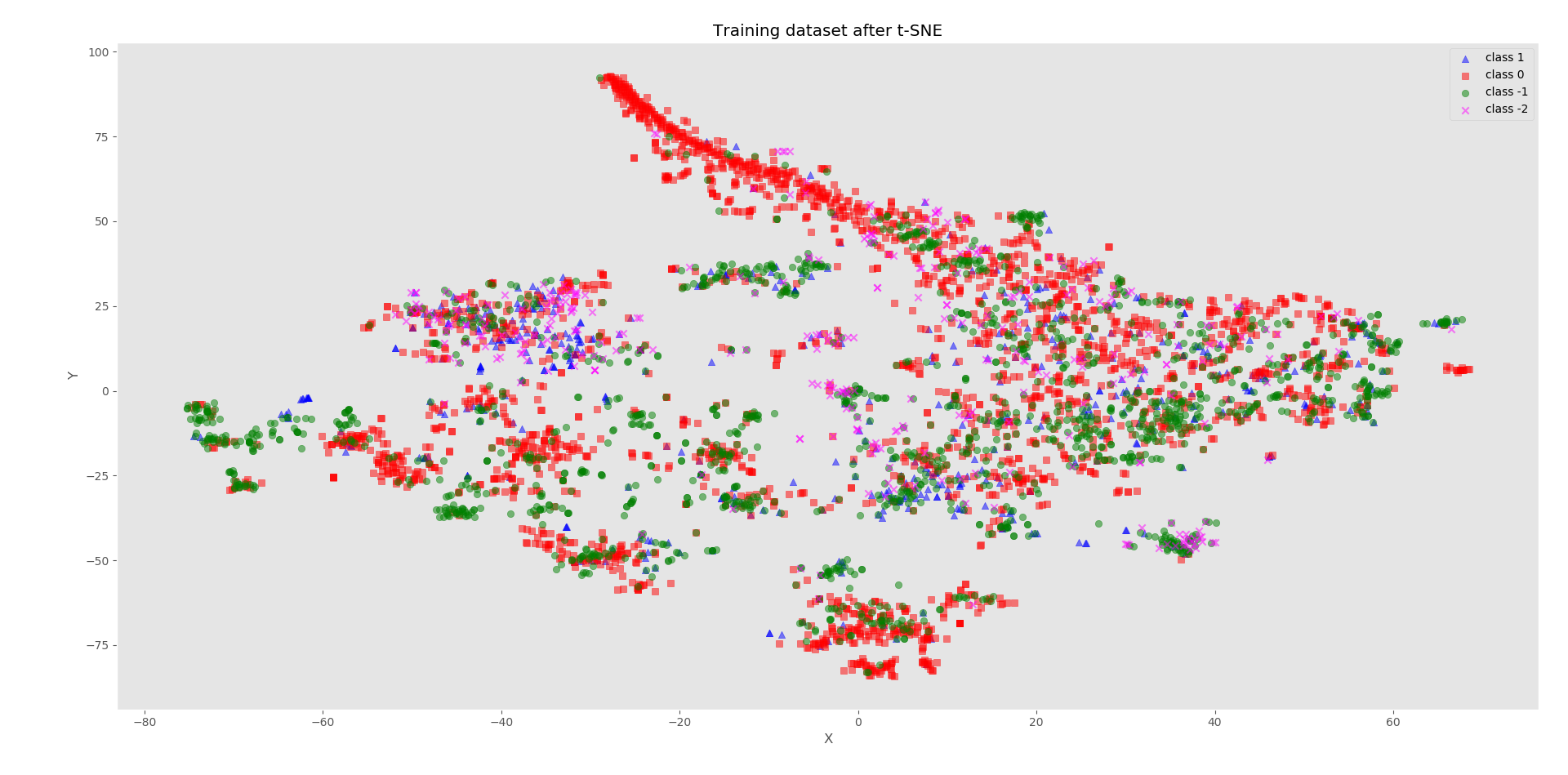suppose I have labeled data and unlabeled data, should I do a PCA process on all the data, and then feed the labeled data through a classifier? Or take only the labeled data through the PCA process and then to the classifier?
EDIT 1:
Adding t-SNE plot of my data (blue and red are labeled and green is unlabeled)

EDIT 2:
Goal is to Binary classify the green data (which is unknown) to red or blue (blue is 1, red is 0)
t-SNE helps me by giving a picture of how my data spread on a 2D dimension.
I hypothesis PCA will help me reduce/compress my data and help me get a better representation of the data (as I only have 4K rows of data and originally, 51 features).
Having labeled and un-labeled data doesn't prevent me from solving the problem, but I want to take every advantage I can in order to get a better classification.
